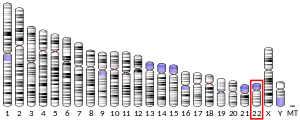| AIFM3 | |||||||||||||||||||||||||||||||||||||||||||||||||||
|---|---|---|---|---|---|---|---|---|---|---|---|---|---|---|---|---|---|---|---|---|---|---|---|---|---|---|---|---|---|---|---|---|---|---|---|---|---|---|---|---|---|---|---|---|---|---|---|---|---|---|---|
| Identifiers | |||||||||||||||||||||||||||||||||||||||||||||||||||
| Aliases | AIFM3, AIFL, apoptosis inducing factor, mitochondria associated 3, apoptosis inducing factor mitochondria associated 3 | ||||||||||||||||||||||||||||||||||||||||||||||||||
| External IDs | OMIM: 617298 MGI: 1919418 HomoloGene: 13773 GeneCards: AIFM3 | ||||||||||||||||||||||||||||||||||||||||||||||||||
| |||||||||||||||||||||||||||||||||||||||||||||||||||
| |||||||||||||||||||||||||||||||||||||||||||||||||||
| |||||||||||||||||||||||||||||||||||||||||||||||||||
| |||||||||||||||||||||||||||||||||||||||||||||||||||
| |||||||||||||||||||||||||||||||||||||||||||||||||||
| Wikidata | |||||||||||||||||||||||||||||||||||||||||||||||||||
| |||||||||||||||||||||||||||||||||||||||||||||||||||
Apoptosis-inducing factor, mitochondria-associated 3 is a protein that in humans is encoded by the AIFM3 gene.[5]
References
- 1 2 3 GRCh38: Ensembl release 89: ENSG00000183773 - Ensembl, May 2017
- 1 2 3 GRCm38: Ensembl release 89: ENSMUSG00000022763 - Ensembl, May 2017
- ↑ "Human PubMed Reference:". National Center for Biotechnology Information, U.S. National Library of Medicine.
- ↑ "Mouse PubMed Reference:". National Center for Biotechnology Information, U.S. National Library of Medicine.
- ↑ "Entrez Gene: Apoptosis inducing factor, mitochondria associated 3". Retrieved 2017-10-24.
Further reading
- Xie Q, Lin T, Zhang Y, Zheng J, Bonanno JA (2005). "Molecular cloning and characterization of a human AIF-like gene with ability to induce apoptosis". J. Biol. Chem. 280 (20): 19673–81. doi:10.1074/jbc.M409517200. PMID 15764604.
- Urbano A, Lakshmanan U, Choo PH, Kwan JC, Ng PY, Guo K, Dhakshinamoorthy S, Porter A (2005). "AIF suppresses chemical stress-induced apoptosis and maintains the transformed state of tumor cells". EMBO J. 24 (15): 2815–26. doi:10.1038/sj.emboj.7600746. PMC 1182241. PMID 16001080.
- Ashktorab H, Dashwood RH, Dashwood MM, Zaidi SI, Hewitt SM, Green WR, Lee EL, Daremipouran M, Nouraie M, Malekzadeh R, Smoot DT (2008). "H. pylori-induced apoptosis in human gastric cancer cells mediated via the release of apoptosis-inducing factor from mitochondria". Helicobacter. 13 (6): 506–17. doi:10.1111/j.1523-5378.2008.00646.x. PMC 7322629. PMID 19166416.
- Hendrickson SL, Lautenberger JA, Chinn LW, Malasky M, Sezgin E, Kingsley LA, Goedert JJ, Kirk GD, Gomperts ED, Buchbinder SP, Troyer JL, O'Brien SJ (2010). "Genetic variants in nuclear-encoded mitochondrial genes influence AIDS progression". PLOS ONE. 5 (9): e12862. Bibcode:2010PLoSO...512862H. doi:10.1371/journal.pone.0012862. PMC 2943476. PMID 20877624.
- Yang W, Sun T, Cao J, Liu F, Tian Y, Zhu W (2012). "Downregulation of miR-210 expression inhibits proliferation, induces apoptosis and enhances radiosensitivity in hypoxic human hepatoma cells in vitro". Exp. Cell Res. 318 (8): 944–54. doi:10.1016/j.yexcr.2012.02.010. PMID 22387901.
- Lin'kova NS, Katanugina AS, Khavinson VKh (2011). "[Expression of AIF and CGRP markers in pineal gland and thymus during aging]". Adv Gerontol (in Russian). 24 (4): 601–5. PMID 22550867.
This article is issued from Wikipedia. The text is licensed under Creative Commons - Attribution - Sharealike. Additional terms may apply for the media files.



